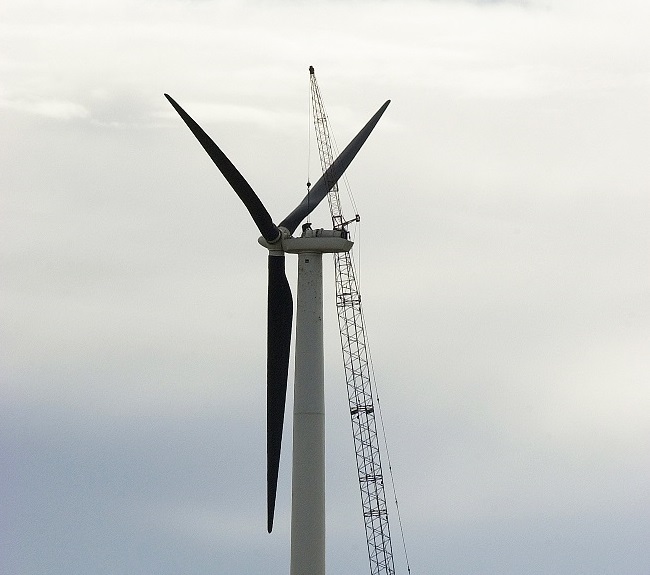Electricity from renewables experiencing a holdup in getting hooked up

Is Minnesota at the forefront of the shift to renewable energy sources? Or is it well behind most of the country?
Paradoxically, it could be both, according to Thursday’s testifiers before the House Climate and Energy Finance and Policy Committee.
During an informational hearing on electricity transmission issues in the state, it became clear that more wind and solar power is being generated here than in almost any other state, but that new utility-scale renewable energy projects have come to a virtual halt.
Most of the 10 testifiers said that transmission is the trouble. Proposed power projects from renewable sources are having a hard time getting hooked up to the grid.
“These projects are stalled out while waiting for transmission,” said Joe Sullivan, commissioner of the Minnesota Public Utilities Commission. “We’re kind of in cold storage right now, and that’s maximally annoying.”
Minnesota ranks sixth in the nation with 5,616 megawatts of operational wind and solar power, according to Betsy Engelking, vice president of policy and strategy for National Grid Renewables, a Bloomington-based utility-scale solar and wind developer. Yet, she said, only one new utility-scale project was launched in Minnesota during the first nine months of 2021, its output only 1.4% of the electricity produced by new renewable projects around the country over that period.
She attributed that to a lag in planning, permitting and construction of new lines. Several other testifiers agreed.
So who’s responsible for giving the green light to getting on the grid? Mostly, it’s MISO, the Midcontinent Independent System Operator.
While Sullivan praised MISO’s success in keeping Minnesotans’ energy bills down, “the transmission planning process has bogged down. Lack of planning and buildout has led us to today, where interconnection costs are extremely high, forcing projects to drop out.”
So what does MISO do?
“We are the reliability coordinators,” said its executive director of external affairs, Brian Tulloh. “Our Eagan facility is something like an air traffic control center for electricity. MISO doesn’t own or plan energy resources, but we have to react to them.”
Tulloh said demand for electricity hasn’t grown in a decade, but that will change with the move to electrification, as electricity becomes the chief energy source for transportation and heating.
“A solution is more grid in a timely fashion,” said Michael Lamb, Xcel Energy’s senior vice president for transmission.
Rep. Zack Stephenson (DFL-Coon Rapids) asked what’s being done to speed up the interconnection requests and the permitting and construction of transmission lines. Aubrey Johnson, MISO’s executive director of system planning and competitive transmission, said help is needed from neighboring system operators like the Southwest Power Pool that covers most of the Great Plains.
“Effective system studies need to be done by our neighbors faster,” he said.
Stephenson was to present a bill designed to address the slowdowns with some changes in the permitting process, but that was held for another day.
After confirming with Sullivan that the state isn’t experiencing a shortage of electricity on the grid, Rep. Chris Swedzinski (R-Ghent) suggested that new projects aren’t needed.
Sullivan disagreed. “The electric system is the largest machine in the world, and it’s constantly changing. New facilities are coming on and old facilities are dropping off. You have power plants on the system that are 60 years old, and, because of the way that they operate, they’re more expensive, they’re less efficient. And those come off. And then we put new stuff on.”
Related Articles
Search Session Daily
Advanced Search OptionsPriority Dailies
Speaker Emerita Melissa Hortman, husband killed in attack
By HPIS Staff House Speaker Emerita Melissa Hortman (DFL-Brooklyn Park) and her husband, Mark, were fatally shot in their home early Saturday morning.
Gov. Tim Walz announced the news dur...
House Speaker Emerita Melissa Hortman (DFL-Brooklyn Park) and her husband, Mark, were fatally shot in their home early Saturday morning.
Gov. Tim Walz announced the news dur...
Lawmakers deliver budget bills to governor's desk in one-day special session
By Mike Cook About that talk of needing all 21 hours left in a legislative day to complete a special session?
House members were more than up to the challenge Monday. Beginning at 10 a.m...
About that talk of needing all 21 hours left in a legislative day to complete a special session?
House members were more than up to the challenge Monday. Beginning at 10 a.m...